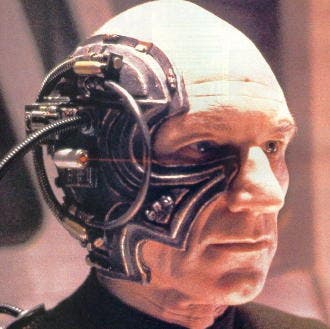Remarkably enough, scientists from Tel Aviv University in Israel, have manged to implant an artificial cerebellum in a rat’s brain, which successfully restored lost brain function. This research could provide the foundations for implementing cyborg-like functions in the human brain sometime in the distant future.

Such an advancement, could possibly one day offer the prospect of a normal life to stroke victims or other patients with other brain-related injuries or traumas. It could also maybe improve learning and memory capabilities in the old. These are all still in the realm of science fiction, though, but not for too much longer, neuroscientists hope.
Modern, high-end prosthetic limbs or ear implants communicated directly to the brain, functioning based on brain impulses. They’re truly marvelous technologies, however such devices involve only one-way communication, either from the device to the brain or vice versa.
Matti Mintz of Tel Aviv University in Israel and his colleagues have created a device that is capable of much more – a synthetic cerebellum which can receive sensory inputs from the brainstem directly. The brainstem is the posterior part of the brain, adjoining and structurally continuous with the spinal cord, that provides the main motor and sensory innervation to the face and neck via the cranial nerves.
The device developed by the Israeli scientists can interpret sensory inputs from the brainstem, and send a signal to a different region of the brainstem that prompts motor neurons to execute the appropriate movement.
“It’s proof of concept that we can record information from the brain, analyse it in a way similar to the biological network, and return it to the brain,” says Mintz, who presented the work this month at the Strategies for Engineered Negligible Senescence meeting in Cambridge, UK.
Synthesizing the brain
The team analyzed brainstem signals feeding into a real rat’s cerebellum and the output it generated in response. This information, coupled with their already complete knowledge regarding the neural architecture of the cerebellum, was used to create a digital version of the cerebellum, inside a chip which was wired to a rat’s brain using electrodes.
The chip was tested and performed remarkably. An anesthetized rat had its cerebellum disabled, before the chip was attached. While still anesthetized, scientists tried to induce a conditional motor reflex – a blink. They would spray the rat’s eye with a powder while playing a tune at the same time. This was repeated until the rat would blink only at hearing the tune alone. The scientists first tried this without the chip connected, and found the rat was unable to learn the motor reflex.
“This demonstrates how far we have come towards creating circuitry that could one day replace damaged brain areas and even enhance the power of the healthy brain,” says Francesco Sepulveda of the University of Essex in Colchester, UK, who was not involved in the research. “The circuitry mimics functionality that is very basic. Nonetheless, this is an exciting step towards enormous possibilities.”
A great challenge in face of the development of genuine cyborg-brain implants someday, however, lies in modeling larger areas of the cerebellum that can learn a sequence of movements and test the chip in a conscious animal.
“It will likely take us several decades to get there, but my bet is that specific, well-organised brain parts such as the hippocampus or the visual cortex will have synthetic correlates before the end of the century,” sais Sepulveda.






